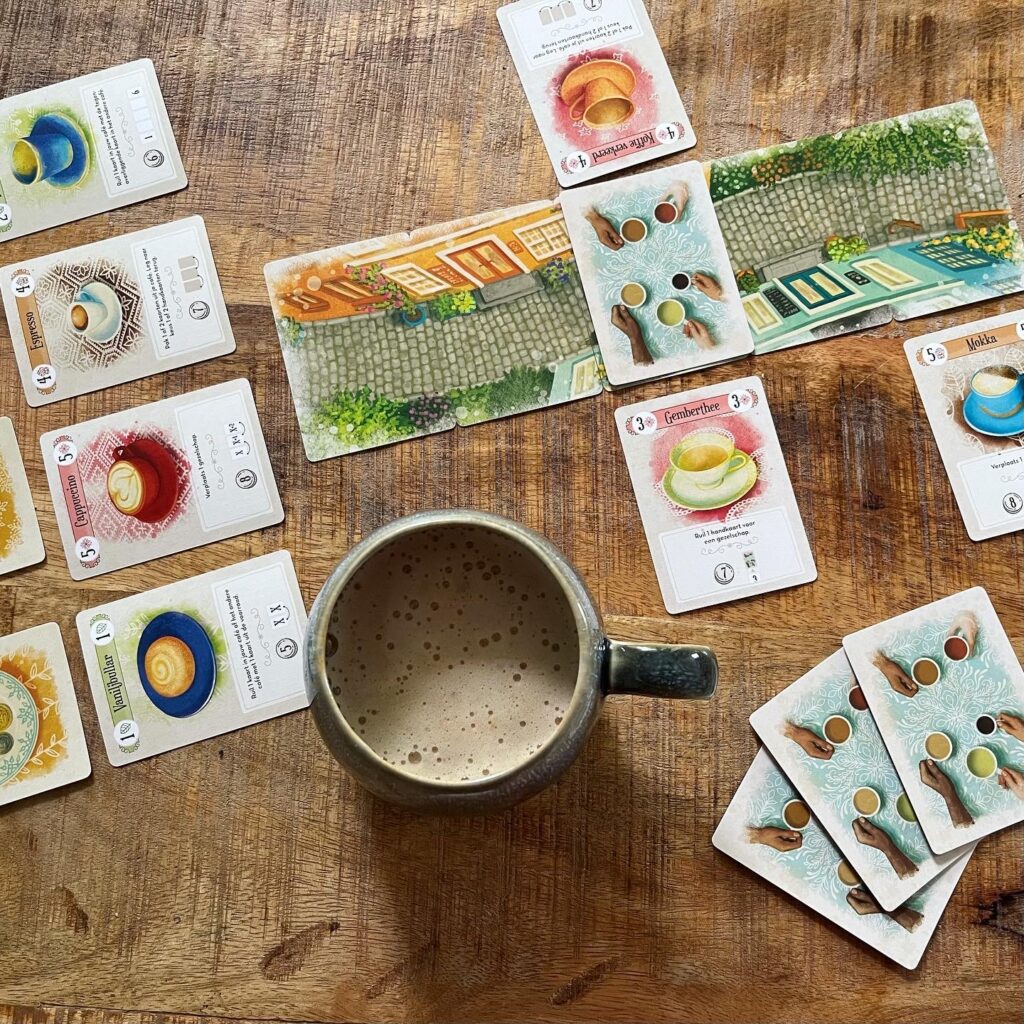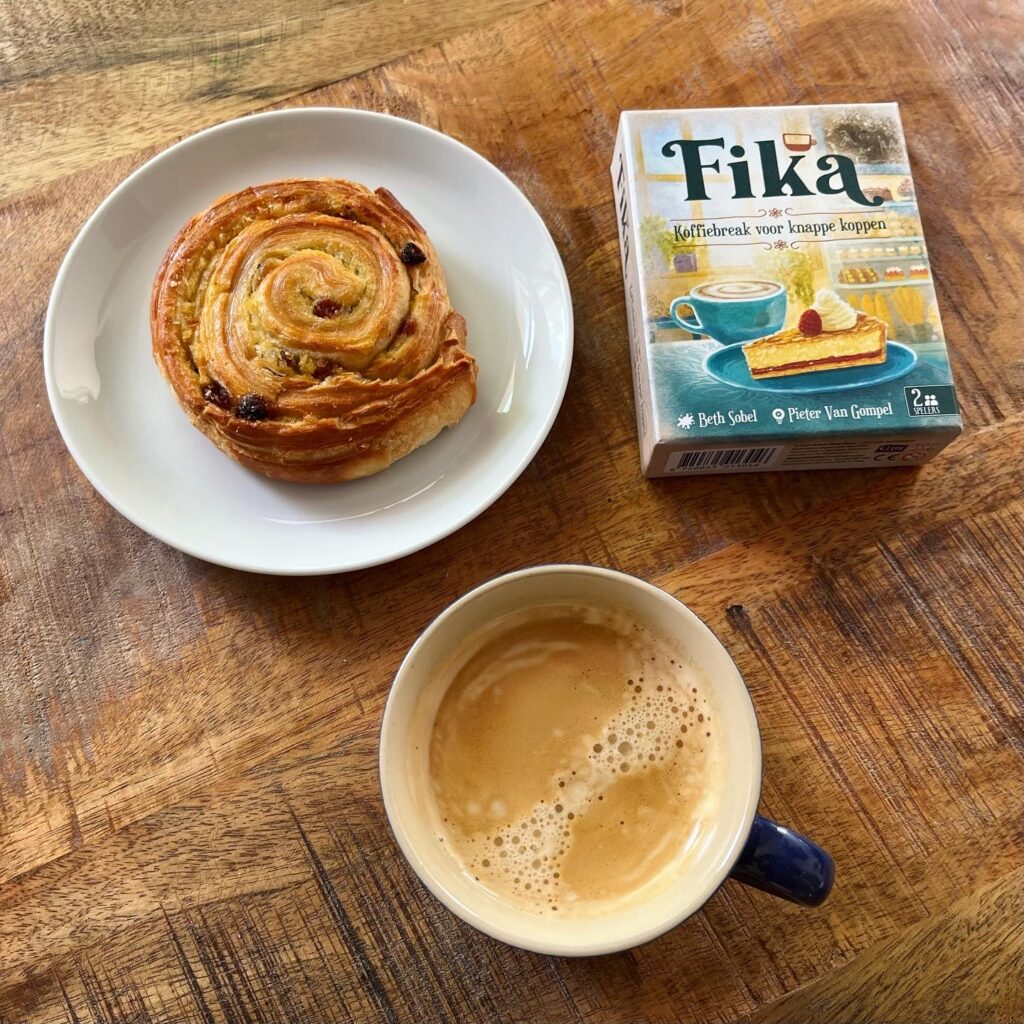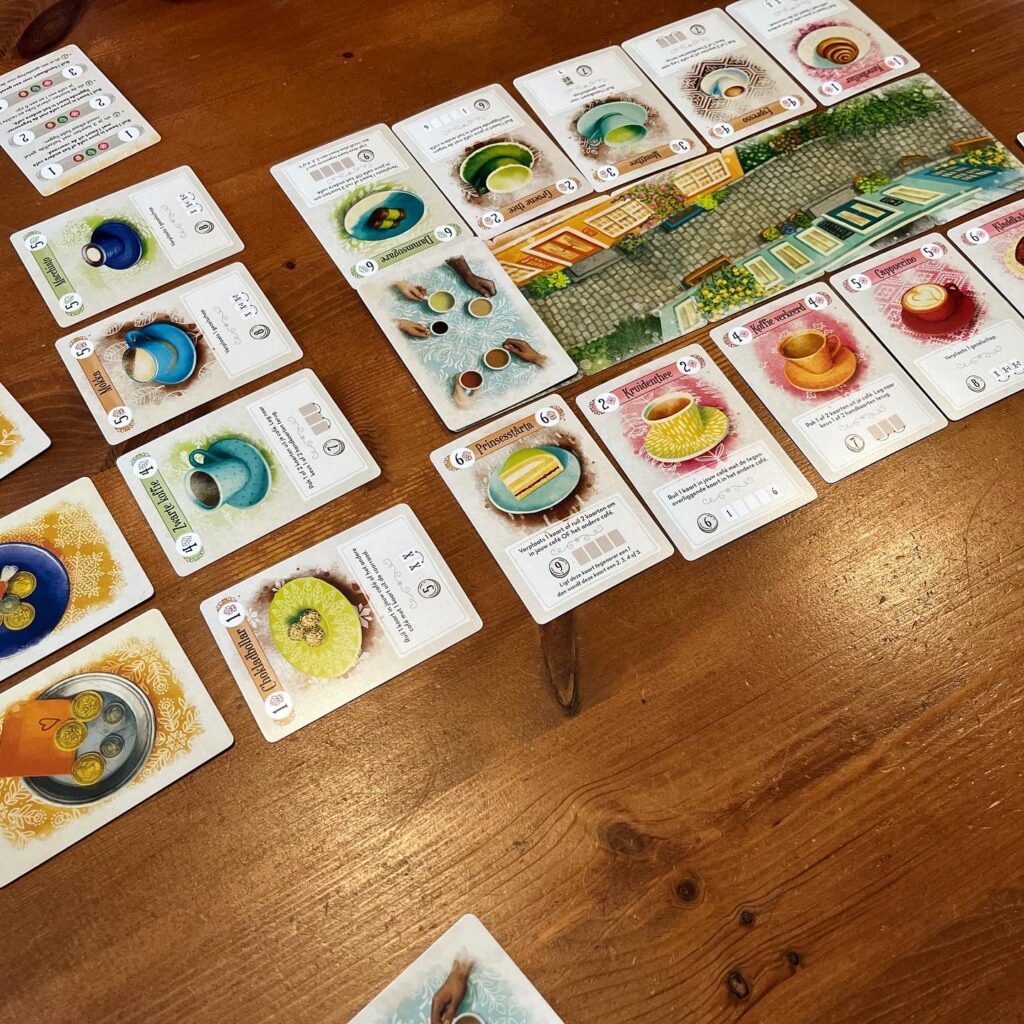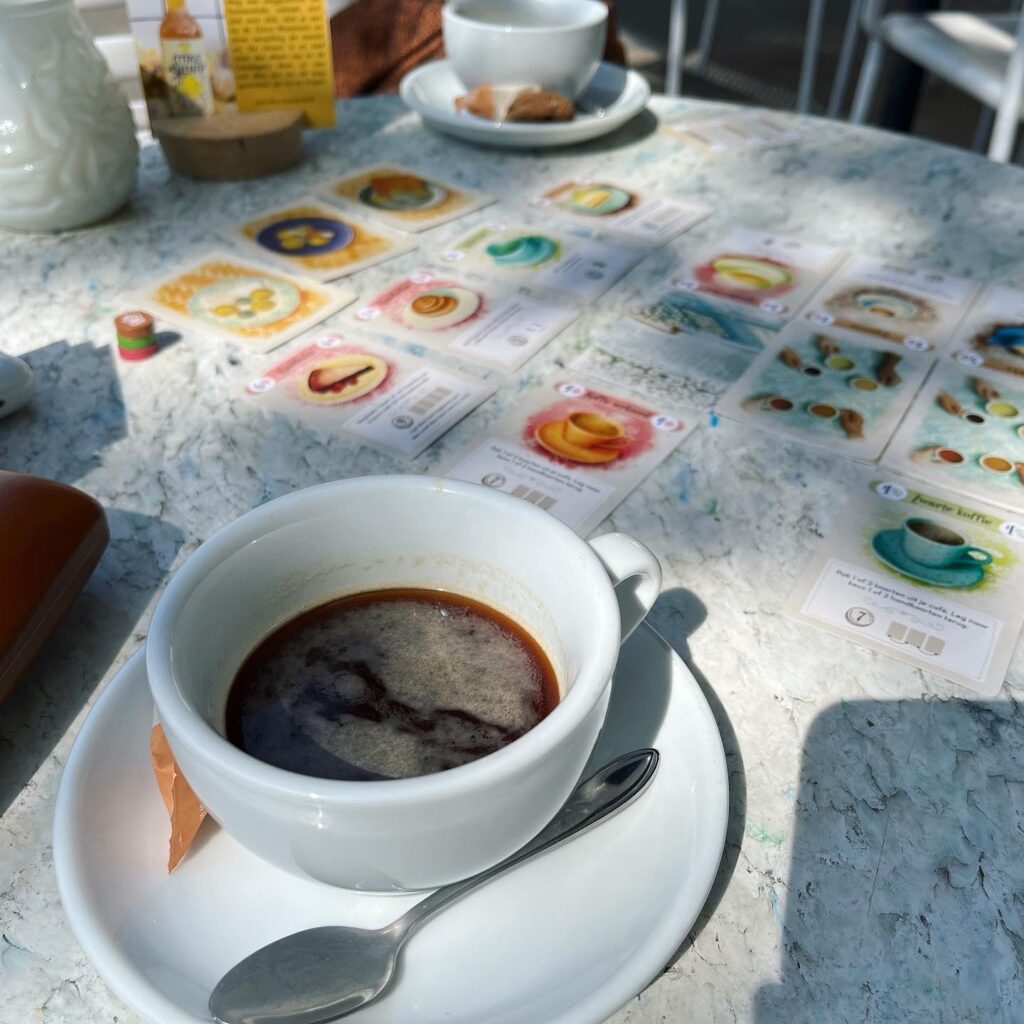What is a fika? Fika is a Swedish concept that has been around for more than a century now. We can therefore truly speak of a Swedish tradition – just like building Ikea cupboards, blonde hair, ABBA, eating Surströmming in public and driving an old Saab. All fun traditions… but the fika in particular. After all, the fika is an activity where you take a break for a cup of coffee or hot tea and pastries or other snacks, and who can’t enjoy that? The eponymous two-player game Fika is therefore based on this delicious tradition and perhaps it is therefore good that I explain a bit more about this Swedish tradition. Of course, I will not forget to write about the game.
Fika?
The name for the Swedish tradition, ‘fika’, can be used as both a verb and a noun: respectively, to hold a fika and the name of the activity itself. The word ‘fika’ is also a kind of reverse corruption of Swedish for coffee (kaffi), and entirely appropriately, the term therefore symbolises Swedish coffee culture. However, coffee does not have to be part of a fika at all.

The fika is a planned break/social activity to break up the work or school day, for example. A moment to break up the routine of the day that has become so prominent that by now it is actually part of that routine itself. Because it serves to break up the day, Swedes often meet during the morning or in the afternoon. For Swedish people, the fika is an important part of the day or week and is actually as ingrained as the siesta is for Spanish(linguistic) people.
During a fika, friends, colleagues, family, acquaintances or loved ones get together for a while to have a drink and a snack and chat or at least be together for a while. This usually involves serving and drinking coffee, tea or another hot beverage, but the rules are not so strict. The hot drink can just as easily be replaced by an elderflower juice, beer, cocktail or other drink. Swedes are real sweet tooths so a pastry or other sweet snacks are usually eaten as well, but savoury is just as acceptable. Some popular fika delicacies include the typical cinnamon rolls (kanelbullar) or cardamom rolls (kardemummabullar). In addition, you often see authentic Swedish biscuits (kakor), cream cakes (tårtor) or, for example, filled (flat) breads with (cream) cheeses and/or fish.
Once again the question rises: what is a fika? Because it is more than a coffee break. A fika is more than food, more than a social meeting and also more than just a break. A fika is a moment of mindfulness, conviviality, awareness, indulgence, relaxation and togetherness. The fika is about nurturing yourself and your relationships and maintaining a good work-life balance. Something that is almost a necessity in today’s busy world. The fika represents that it is good to hit the pause button now and then. So after this necessary explanation, let’s reflect on the game inspired by this tradition.
Setup and goal
Are you already seated in that cosy coffee shop or on the terrace? Order some drinks with a matching pastry, because in the meantime you can set up the game and explain it to the other player (and maybe even already start to play a round) while you wait for your order. The very compact box may not contain many parts, but it does contain plenty of gameplay. Players lay down the playing field, consisting of 5 double-sided cards, open on the table between the two players to form a street with two cafés. At one end of the street, players lay out the three tip cards. These tip cards are used to keep track of how many rounds a player has won. Players receive some gameplay overview cards and the remaining cards, containing drinks and treats, are shuffled. Draw four cards to form a general supply, place two cards face down as ‘companions’ and give each player a hand of six cards. Your order hopefully arrives quickly and players are then ready to start their fika and play the game Fika.

The aim of the game? In up to three rounds, you try to attract the most guests (points) to your cafe. Players do this by placing different drinks and pastries in their cafe to activate special effects of cards and meet score conditions on their played cards to earn those coveted points. Players only have room for five cards in their cafe, so they need to place their cards smartly. Due to the effects of different cards, which can also affect their opponents, they have to react tactically and be able to adjust their strategy quickly.
Gameplay
Although Fika is not a trick taking game, it does have an element of trick taking games in the form of different colours of cards, a sequencing through the values on these cards and the use of trump cards. This sounds more complex than it actually is. Fika has cards (with drinks and pastries) in three different colours in values from 1 to 6. Each value corresponds to a type of drink or pastry and each drink or pastry has a special effect and a way of scoring at the end of a round.
Each round consists of 2 parts: at the beginning of a round, players determine the ‘order’ of colours for the round, and then they start playing cards from their hand of cards. To play cards in the second part, players choose a card from their hand and reveal their chosen card at the same time. The player with the card with the highest value must be the first to place their card in their cafe. If players play a card of equal value, the order of colours is considered. This continues until players have five cards in their cafe and then the scoring for the round takes place.
When a player places a card, that player may perform the card’s effect. Effects generally allow players to (re)change or (re)place cards and parties. Players can thus influence the cards in their own cafe to meet score conditions, but often also influence the cards of their opponents. This makes Fika extremely interactive and dynamic, but also allows you to thwart your opponent, but the same opponent can also thwart you considerably… So don’t throw in your own cups too quickly.



At the end of the round, you score points from left to right in your café. Each card shows how that particular card scores points. In general, you earn points by the placement of cards. So you can earn points by placing the same colours or numbers next to each other, making consecutive rows or placing a certain amount of colours in your cafe. I already mentioned parties twice. These are cards this are placed on the street and increase points from cards.
Verdict
Fika is a manageable game with few components and intuitive rules, but with plenty of gameplay. Beth Sobel’s illustrations are beautiful and immediately puts you in the right moods of a fika. Don’t be fooled, however, because despite the beautiful and cosy design, small size and simple gameplay, Fika is a vicious brainteaser. Players must constantly evaluate their tactics and their opponent’s tactics. Fika gets way better after you get familiar with the game and the cards. The different cards, effects and ways to score may be overwhelming for inexperienced players, requiring more frequent rule reviews in the first game, but after several games you will easily master the cards the game offers.
The game is particularly interactive and dynamic, and despite its short playing time, it will linger in your mind for a long time afterwards. Its small size also makes it perfect to bring along for your holidays and travel, but especially a fika. A game lasts a maximum of 20 minutes, leaving plenty of time to catch up and enjoy Swedish delicacies. Skål!




